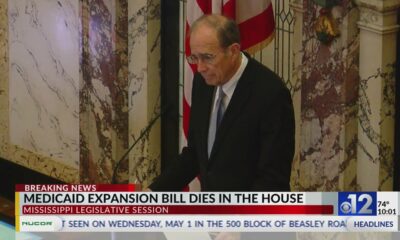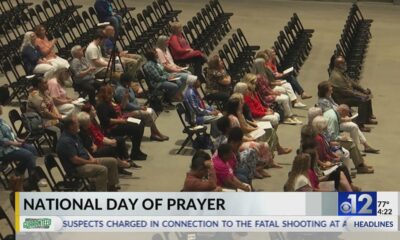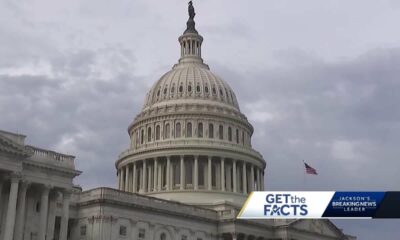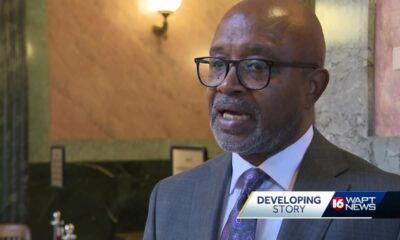Kaiser Health News
Doctors Created a Primary Care Clinic as Their Former Hospital Struggled
by Cecilia Nowell
Fri, 21 Jul 2023 09:00:00 +0000
GALLUP, N.M. — About a year ago, Valory Wangler, a family medicine doctor, invited a handful of former co-workers to her backyard.
During the early months of the covid-19 outbreak, Wangler and her colleagues had worked at a hospital in this former railroad hub of about 21,000 residents just a few miles from the Navajo Nation. The pandemic had been hard on Rehoboth McKinley Christian Hospital. Emergency federal funding was drying up and nearly a third of the staff — including Wangler, the chief medical officer — left after its board of trustees hired an out-of-state, for-profit management services firm to take over operations in August 2020.
The group of former hospital employees in Wangler's backyard that afternoon in June 2022, including two OB-GYNs and a chaplain, knew the situation was dire and wondered what they could do.
Wangler said they realized “the most important thing we could do for the community is have good access to primary care.”
The health care cliff Wangler and her former colleagues confronted is one that has challenged dozens of rural communities over the past two decades.
By late 2022, the hospital had closed its labor and delivery unit and lost most of its primary care doctors. Gallup's McKinley County was recording the largest primary care provider deficit in rural New Mexico — and local doctors knew that could lead to an increase in untreated conditions and patients seeking emergency rather than preventive care.
As of July 11, 195 rural hospitals have shuttered inpatient units or closed their doors altogether in the United States since 2005. Hundreds of others, like the one in Gallup, have cut services. Meanwhile, from 2006 to 2018, the combined number of Federally Qualified Health Centers and Rural Health Centers — outpatient clinics that receive federal funding to operate in medically underserved areas — increased by roughly 50%, according to a 2021 study from the University of North Carolina-Chapel Hill. By 2019, 20% of rural residents accessed care at such community health centers.
In response to the challenges facing their hospital, Wangler and the colleagues who'd gathered in her yard decided to open their own physician-led, nonprofit clinic, which is on its way to becoming an FQHC Look-Alike, an organization that meets the eligibility requirements of an FQHC but does not receive grant funding. That status will qualify the clinic for multiple types of federal aid including drug pricing discounts. Since it opened its doors last August, Gallup Community Health has treated about 3,000 patients in its stucco office space just a block from the historic U.S. Route 66. Many of GCH's doctors came to Gallup from elsewhere and could have left town for more lucrative jobs. Instead, they decided to stay and attempt to fill primary care gaps.
“I've not seen [an FQHC] like this,” said Tim Putnam, a faculty member of the Medical University of South Carolina, a former hospital CEO, and a past president of the National Rural Health Association. Although it's rare, if not a first, for physicians to lead their own FQHC, he said, it's not uncommon to see FQHCs started by community groups, and in Gallup “the physicians are so dedicated to the community” that they're like a community group themselves.
Unlike rural hospitals, which are increasingly being purchased by private equity firms and prioritizing lucrative specialties to increase profits, these health centers must offer primary care regardless of patients' ability to pay and be overseen by a board made up primarily of patients. But while clinics provide important primary care services, researchers note that they struggle to fill the gaps in specialty and emergency care left by hospital closures.
Marcie Richmond, one of the clinic's family medicine doctors, came to Gallup for the same reason that drew many of her colleagues: “to work with populations that might not be receiving much care.” She envisions a day when more of the Gallup area's providers come from the local Navajo and Zuni communities, but until then she hopes to continue offering much-needed “care for people who are victims of chronic injustice.”
The clinic's interior reflects that care: Indigenous children's books like “Where Did You Get Your Moccasins?” and “We Sang You Home” fill the lobby, prints by Zuni artist Mallery Quetawki are going up in exam rooms, and watercolors of nearby Red Rock Park and photographs of Canyon de Chelly hang in the hallways.
On a Thursday morning in April, Renie Lente and her sister, Elsie, waited for their appointment.
Elsie has cerebral palsy and lives in a nursing home; Lente is her caregiver. Lente had called the night before after she noticed a fungal infection on Elsie's foot, and the clinic was able to fit her in the next morning with the provider who treats her whole family. The community clinic is a “big change” from Rehoboth McKinley, where, Lente said, there was a backlog to be seen by primary care providers that left patients turning to the emergency room. After family medicine physician Neil Jackson treated Elsie, making space in the small exam room for both sisters and nursing home staffers, Lente noted that she appreciated how Jackson “treats you like family.”
“One of the things that the staff committed to from the beginning was doing what was right for the patient and figuring out finances later,” said Wangler, the clinic's executive director.
The clinic opened its doors in large part thanks to contributions from the community: A statewide hospital system donated equipment, Gallup residents raised $30,000, and more than half the doctors volunteered their time or asked not to be paid until the clinic was operating in the black.
The team intended to offer some reproductive health care, but not prenatal care. Their clinic wasn't a hospital, so patients would have to give birth elsewhere. But by the time the clinic opened, Rehoboth McKinley had closed its labor and delivery unit after every OB-GYN left the hospital, forcing pregnant patients to transfer their care to the local Indian Health Service facility — a sizable hospital where many Native Americans can seek care but which not all of them prefer — or to a hospital more than an hour's drive away.
The doctors quickly started looking into what it would take to offer prenatal care. They wanted at least to save patients from having to choose between spending hours and gas money traveling for appointments and forgoing prenatal care entirely. By November, the community had raised $24,000 to pay for prenatal malpractice insurance. And during that time the clinic's OB-GYNs and OB-trained family medicine doctors developed a plan for providing prenatal care while maintaining relationships with the more distant hospitals where their patients could deliver.
Clinic leaders intend to keep the doors open by applying for it to become a Federally Qualified Health Center Look-Alike. That would qualify it for higher Medicare and Medicaid payments.
Clinic staffers hope providing quality outpatient care can minimize hospitalizations and the need to travel for specialty care. One of the tools helping GCH doctors provide that care is the University of New Mexico Health System's PALS, a hotline service that connects physicians anywhere in the state with specialists who can answer questions about care outside their area of practice.
“There's a physician shortage everywhere and a real understanding that it is challenging for people to get in from the rural setting,” said Wangler, who added that specialists have been amenable to partnering and offering guidance.
Doctors like Jackson say the tight-knit community in Gallup made them want to stay and try to fill the primary care void. “All of the folks that I'm working with here are truly rooted in the community and going to be here for better or worse.”
This article was supported by the Journalism and Women Symposium Health Journalism Fellowship, with the support of The Commonwealth Fund.
By: Cecilia Nowell
Title: Doctors Created a Primary Care Clinic as Their Former Hospital Struggled
Sourced From: kffhealthnews.org/news/article/doctors-primary-care-clinic-hospital-gallup-nm/
Published Date: Fri, 21 Jul 2023 09:00:00 +0000
Kaiser Health News
KFF Health News’ ‘What the Health?’: Abortion Access Changing Again in Florida and Arizona
Thu, 02 May 2024 19:30:00 +0000
The Host
Julie Rovner
KFF Health News
Julie Rovner is chief Washington correspondent and host of KFF Health News' weekly health policy news podcast, “What the Health?” A noted expert on health policy issues, Julie is the author of the critically praised reference book “Health Care Politics and Policy A to Z,” now in its third edition.
The national abortion landscape was shaken again this week as Florida's six-week abortion ban took effect. That leaves North Carolina and Virginia as the lone Southern states where abortion remains widely available. Clinics in those states already were overflowing with patients from across the region.
Meanwhile, in a wide-ranging interview with Time magazine, former President Donald Trump took credit for appointing the Supreme Court justices who overturned Roe v. Wade, but he steadfastly refused to say what he might do on the abortion issue if he is returned to office.
This week's panelists are Julie Rovner of KFF Health News, Sarah Karlin-Smith of the Pink Sheet, Alice Miranda Ollstein of Politico, and Rachana Pradhan of KFF Health News.
Panelists
Sarah Karlin-Smith
Pink Sheet
Alice Miranda Ollstein
Politico
Rachana Pradhan
KFF Health News
Among the takeaways from this week's episode:
- Florida's new, six-week abortion ban is a big deal for the entire South, as the state had been an abortion haven for patients as other states cut access to the procedure. Some clinics in North Carolina and southern Virginia are considering expansions to their waiting and recovery rooms to accommodate patients who now must travel there for care. This also means, though, that those traveling patients could make waits even longer for local patients, including many who rely on the clinics for non-abortion services.
- Passage of a bill to repeal Arizona's near-total abortion ban nonetheless leaves the state's patients and providers with plenty of uncertainty — including whether the ban will temporarily take effect anyway. Plus, voters in Arizona, as well as those in Florida, will have an opportunity in November to weigh in on whether the procedure should be available in their state.
- The FDA's decision that laboratory-developed tests must be subject to the same regulatory scrutiny as medical devices comes as the tests have become more prevalent — and as concerns have grown amid high-profile examples of problems occurring because they evaded federal review. (See: Theranos.) There's a reasonable chance the FDA will be sued over whether it has the authority to make these changes without congressional action.
- Also, the Biden administration has quietly decided to shelve a potential ban on menthol cigarettes. The issue raised tensions over its links between health and criminal justice, and it ultimately appears to have run into electoral-year headwinds that prompted the administration to put it aside rather than risk alienating Black voters.
- In drug news, the Federal Trade Commission is challenging what it sees as “junk” patents that make it tougher for generics to come to market, and another court ruling delivers bad news for the pharmaceutical industry's fight against Medicare drug negotiations.
Plus, for “extra credit” the panelists suggest health policy stories they read this week that they think you should read, too:
Julie Rovner: ProPublica's “A Doctor at Cigna Said Her Bosses Pressured Her To Review Patients' Cases Too Quickly. Cigna Threatened To Fire Her,” by Patrick Rucker, The Capitol Forum, and David Armstrong, ProPublica.
Alice Miranda Ollstein: The Associated Press' “Dozens of Deaths Reveal Risks of Injecting Sedatives Into People Restrained by Police,” by Ryan J. Foley, Carla K. Johnson, and Shelby Lum.
Sarah Karlin-Smith: The Atlantic's “America's Infectious-Disease Barometer Is Off,” by Katherine J. Wu.
Rachana Pradhan: The Wall Street Journal's “Millions of American Kids Are Caregivers Now: ‘The Hardest Part Is That I'm Only 17,” by Clare Ansberry.
Also mentioned on this week's podcast:
- Time's “How Far Trump Would Go,” by Eric Cortellessa.
- NPR's “Why Is a 6-Week Abortion Ban Nearly a Total Ban? It's About How We Date a Pregnancy,” by Selena Simmons-Duffin.
- NPR's “'Sicko's' Peeno Sees Few Gains in Health Insurance,” by Julie Rovner.
- CNN's “Walmart Will Close All of Its Health Care Clinics,” by Nathaniel Meyersohn.
Credits
Francis Ying
Audio producer
Emmarie Huetteman
Editor
To hear all our podcasts, click here.
And subscribe to KFF Health News' “What the Health?” on Spotify, Apple Podcasts, Pocket Casts, or wherever you listen to podcasts.
——————————
Title: KFF Health News' ‘What the Health?': Abortion Access Changing Again in Florida and Arizona
Sourced From: kffhealthnews.org/news/podcast/what-the-health-345-abortion-access-florida-arizona-may-2-2024/
Published Date: Thu, 02 May 2024 19:30:00 +0000
Kaiser Health News
DIY Gel Manicures May Harm Your Health
Tarena Lofton
Thu, 02 May 2024 09:00:00 +0000
A fresh set from the comfort of your own home? DIY gel nails have been all the rage on social media, but the practice could cause you to develop a life-changing allergy. In a TikTok video, creator @alina.gene describes developing an acrylate allergy from doing gel nails at home. Now, when exposed to acrylates, the creator feels severe pain.
The creator warns viewers not to self-apply nail polish that requires a UV light to cure. In later videos, @alina.gene explains that at-home use differs from in-salon use because salon professionals have access to higher-quality chemicals that are less likely to cause reactions and that they also have proper training on how to safely apply the products.
“I know I sound real dramatic because an allergy to gel nails or even an allergy to acrylates isn't going to kill you, but the thing is, in the wrong situation it could prevent you from getting lifesaving medical care,” said @alina.gene in another video. Common medical products contain acrylates, and developing this allergy can cause major issues in obtaining future medical care.
We asked an allergist to walk us through this viral video.
If you enjoyed this story from the KFF Health News social team, follow us on Instagram @KFFHealthNews.
✍️: KFF Health News Audience Engagement Team
——————————
By: Tarena Lofton
Title: DIY Gel Manicures May Harm Your Health
Sourced From: kffhealthnews.org/news/article/diy-gel-manicures-health-risks/
Published Date: Thu, 02 May 2024 09:00:00 +0000
Did you miss our previous article…
https://www.biloxinewsevents.com/robert-f-kennedy-jr-is-wrong-about-a-ban-on-nih-research-about-mass-shootings/
Kaiser Health News
Robert F. Kennedy Jr. Is Wrong About a Ban on NIH Research About Mass Shootings
Louis Jacobson, PolitiFact
Thu, 02 May 2024 09:00:00 +0000
“Congress prohibits the NIH from researching the cause of mass shootings.”
Robert F. Kennedy Jr. in an April 21 post on X
The National Institutes of Health is the federal government's main agency for supporting medical research. Is it barred from researching mass shootings? That's what presidential candidate Robert F. Kennedy Jr. said recently.
Kennedy, whose statements about conspiracy theories earned him PolitiFact's 2023 “Lie of the Year,” is running as an independent third-party candidate against President Joe Biden, the presumptive Democratic candidate, and the presumptive Republican nominee, former President Donald Trump.
On April 21 on X, Kennedy flagged his recent interview with conservative commentator Glenn Beck, which touched on gun policy. Kennedy summarized his gun policy views in the post, writing, “The National Institutes of Health refuses to investigate the mystery; in fact, Congress prohibits the NIH from researching the cause of mass shootings. Under my administration, that rule ends — and our kids' safety becomes a top priority.”
But this information is outdated.
In 1996, Congress passed the “Dickey Amendment,” an appropriations bill provision that federal officials widely interpreted as barring federally funded research related to gun violence (though some observers say this was a misinterpretation). Congress in 2018 clarified that the provision didn't bar federally funded gun-related research, and funding for such efforts has been flowing since 2020.
Kennedy's campaign did not provide evidence to support his statement.
What Was the Dickey Amendment?
After criticizing some federally funded research papers on firearms in the mid-1990s, pro-gun advocates, including the National Rifle Association, lobbied to halt federal government funding for gun violence research.
In 1996, Congress approved appropriations bill language saying that “none of the funds made available for injury prevention and control at the Centers for Disease Control and Prevention may be used to advocate or promote gun control.” The language was named for one of its backers, Rep. Jay Dickey (R-Ark).
But the Dickey Amendment, as written, did not ban all gun-related research outright.
“Any honest research that was not rigged to produce results that helped promote gun control could be funded by CDC,” said Gary Kleck, a Florida State University criminologist. But CDC officials, experts said, interpreted the Dickey Amendment as banning all gun-related research funding.
This perception meant the amendment “had a chilling effect on funding for gun research,” said Allen Rostron, a University of Missouri-Kansas City law professor who has written about the amendment. Federal agencies “did not want to take a chance on funding research that might be seen as violating the restriction” and so “essentially were not funding research on gun violence.”
Also, the Dickey Amendment targeted only the CDC, not all other federal agencies. Congress expanded the restriction to cover NIH-funded research in 2011.
Although the Dickey Amendment didn't bar gun-related research, federal decision-makers acted as though it did by not pursuing such research.
Moving Past the Dickey Amendment
Over time, critics of the gun industry made an issue of the Dickey Amendment and gathered congressional support to clarify the amendment.
In 2018, lawmakers approved language that said the amendment wasn't a blanket ban on federally funded gun violence research. By 2020, federal research grants on firearms began to be issued again, starting with $25 million to be split between the CDC and NIH.
By now, the CDC and NIH are funding a “large portfolio” of firearm violence-related research, said Daniel Webster, a professor at the Johns Hopkins Bloomberg School of Public Health.
Also, the Justice Department's National Institute of Justice has funded the largest study of mass shootings to date, Webster said, and is seeking applications for studies of mass shootings.
Our Ruling
Kennedy said, “Congress prohibits the NIH from researching the cause of mass shootings.”
Although the Dickey Amendment, a provision of appropriations law supported by the gun industry, didn't prohibit all federally supported, gun-related research from 1996 to 2018, decision-makers acted as though it did.
However, in 2018, Congress clarified the provision's language. And since 2020, CDC, NIH, and other federal agencies have funded millions of dollars in gun-related research, including studies on mass shootings.
We rate Kennedy's statement False.
Our Sources
Robert F. Kennedy Jr. post on X, April 21, 2024
National Institutes of Health, “NIH Awards Additional Research and Training Grants to Support Firearm Injury and Mortality Prevention Science,” Sept. 20, 2023
National Institute of Justice, “Public Mass Shootings: Database Amasses Details of a Half Century of U.S. Mass Shootings with Firearms, Generating Psychosocial Histories,” Feb. 3, 2022
National Institute of Justice, “NIJ FY24 Research and Evaluation on Firearm Violence and Mass Shootings,” Feb. 5, 2024
Centers for Disease Control and Prevention, “Funded Research,” accessed April 22, 2024
American Psychological Association, “A Thaw in the Freeze on Federal Funding for Gun Violence and Injury Prevention Research,” April 1, 2021
Allen Rostron, “The Dickey Amendment on Federal Funding for Research on Gun Violence: A Legal Dissection” (American Journal of Public Health), July 2018
Email interview with Gary Kleck, a Florida State University criminologist, April 22, 2024
Email interview with Daniel W. Webster, professor at the Johns Hopkins Bloomberg School of Public Health, April 22, 2024
Email interview with Jaclyn Schildkraut, executive director of the Regional Gun Violence Research Consortium at the Rockefeller Institute of Government, April 22, 2024
Email interview with Mike Lawlor, University of New Haven criminologist, April 22, 2024
Email interview with Allen Rostron, University of Missouri-Kansas City law professor, April 22, 2024
KFF Health News is a national newsroom that produces in-depth journalism about health issues and is one of the core operating programs at KFF—an independent source of health policy research, polling, and journalism. Learn more about KFF.
USE OUR CONTENT
This story can be republished for free (details).
——————————
By: Louis Jacobson, PolitiFact
Title: Robert F. Kennedy Jr. Is Wrong About a Ban on NIH Research About Mass Shootings
Sourced From: kffhealthnews.org/news/article/fact-check-rfk-jr-wrong-nih-research-mass-shootings-gun-control-dickey-amendment/
Published Date: Thu, 02 May 2024 09:00:00 +0000
Did you miss our previous article…
https://www.biloxinewsevents.com/breaking-a-promise-california-deficit-could-halt-raises-for-disability-workers/
-
Mississippi Today5 days ago
On this day in 1951
-
Mississippi News6 days ago
One injured in Mississippi officer-involved shooting after chase
-
SuperTalk FM3 days ago
Festival merger in Leland sets up one major event for Mississippi Delta
-
SuperTalk FM4 days ago
PERS bill set to phase in employer rate increase heads to governor’s desk
-
Mississippi Business2 days ago
Geartek expanding operations in Alcorn County
-
Mississippi News3 days ago
Two women accused of shoplifting across southeast captured in Mississippi
-
SuperTalk FM6 days ago
Investigation underway after gun found in backpack of Ridgeland High School student
-
SuperTalk FM7 days ago
Mississippi Senate throws curveball, sets spiral in motion for brand new public school funding formula






































